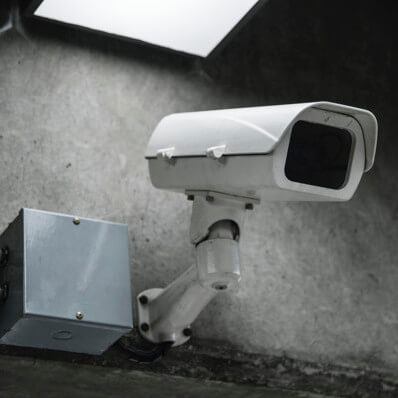Systemic failures of the current security monitoring system and the new approach.
By Farhat Ali — Mar 2020
On the morning of August 10, 2019, Jeffrey Epstein’s body was found in his Manhattan jail cell, two hours after his death. People wonder how such a high-profile inmate was left unsupervised so that he could hang himself or maybe murdered. How can such an event happen in the highest security prison, under 24/7 monitoring by surveillance cameras, and manned by well-trained guards? Jeffrey Epstein’s death has revealed the failure at multiple levels of the current approach to monitoring.
- Failure 1: Relying solely on human ability to continuously monitor.
In Epstein’s case, two of the guards on duty that night were reported to be surfing the internet, even sleeping at some points instead of checking on Mr. Epstein every half hour. Guarding and monitoring are not fun jobs. Not to mention the psychological and physical deficiencies as the guards were on overtime shifts. When boredom and fatigue kicked in, suspicious events were ignored even when their station was just 15 feet from Epstein’s cell.
2. Failure 2: Surveillance cameras are used for after-the-fact investigation.
The conventional motion-based alerts from surveillance cameras were ignored due to their low accuracy. Based on data gathered by Sentry AI, 9 out of 10 motion-based alerts are false and this causes lack of attention and proper due diligence on the part of monitoring agents. In Epstein’s case, all surveillance cameras in and outside the cell tier were not monitored properly and failed to prevent the event from happening. Not until November 2019, “hundreds of hours of video” of the night from the Metropolitan Corrections Center was obtained and analyzed. Not to mention the additional challenge to retrieve the video footage from backup storage. Indeed, the critical part recording the first Epstein’s suicide attempt 1 week earlier no longer existed because of technical errors.
3. Failure 3: Lack of a reliable mechanism to monitor the system performance.
The on-duty guards were supposed to check on Mr. Epstein every half-hour, but they did not follow the protocol and further lied about it in their documentation. The camera inside the tier that could see the Epstein cell door and the doors of other inmates didn’t work that night. These system control failures should have been flagged to appropriate authorities so that corrective action would have been taken.
Available AI technology applications can easily fix the above systemic failures. For example, Sentry AI — a Silicon Valley based company — offers a solution leveraging computer vision technologies which addresses all these issues (See Fig. 1). The solution augments human capabilities by empowering security personnel in minimizing errors and providing controls for monitoring overall system performance.
How AI-based monitoring fixes the failures?
- AI never tires! With the exponential growth of GPU-powered computing technology in recent years, complex computer vision-based AI algorithms can process thousands of video feeds in real-time, detecting wide ranges of events and return the result in sub-seconds. With AI as a first-level filter for the presence of people, vehicles, or specific objects such as weapons, security operators no longer need to continuously stare into a bunch of monotonous screens for hours. Instead, they can focus on verifying the event-based alerts and taking appropriate action. The monitoring centers that have adopted Sentry AI solutions have seen 10X fewer alerts. This makes it is less likely to miss events that require intervention.
- AI makes it possible to intervene and prevent crime in real-time! Significant advances have been made in computer vision technologies to not only detect but recognize people based on their faces, geometric shapes, and gait cues. Back to Epstein’s case, if the camera on the passageway leading to Epstein’s cell were AI-powered, the presence of any unauthorized person could have been detected and alerted on the spot. As AI-based monitoring software can also connect with the predefined procedure; even an authorized person being in the wrong place at the wrong time could easily have been spotted.
- AI can cross-check the procedure and be self-maintained! The latest computer vision technology can digitize specific events, times and locations, and can use this data to track behavior and recognize patterns. If the two guards didn’t follow the procedure to check on Epstein every 30 minutes, AI would recognize the abnormality and escalate the non-conformance to the supervisor. In addition, if there was any suspicious behavior in the passageway or in the cell, the AI-based monitoring system would have raised an alarm. AI can monitor the monitoring system end-to-end. The camera in the passageway not working would have been alerted and mitigating action would have been in place.
- AI can self-learn and improve itself over time! What makes AI-based monitoring outperform traditional solutions is the ability to improve itself over time. Deep learning models in most AI video analytics use vast amounts of past data to discern patterns and replicate the operator behavior when a new image or video is presented for analysis. Over time, the monitoring process continually improves as the AI algorithms get better and better with the feedback received from the guards, management, and process.

Advancement in Vision and AI technologies and the resulting automation have reduced the cost of monitoring operations significantly. The Epstein’s case has shown us that it is time to replace the current inefficient system with a new AI-powered system.
About the Author:

Farhat Ali is the former president & chief executive officer of Fujitsu America and the founder of many startups. He is Sentry AI COO bringing his experience leading Information Technology operations in US, Canada, Central America, India, and Philippines to help the company expand the business.
Farhat graduated summa cum laude from Princeton University with a Bachelor of Science degree in electrical engineering and computer science. He obtained a master of business administration from Harvard Business School.


